First-O-Lite (FOL) was established in 2010 in Nanjing, China with an aim to become an OLED lighting developer and producer. Based on its hybrid tandem architecture, FOL has a 2-Gen OLED lighting production fab that is currently producing 70 lm/W OLED lighting panels.
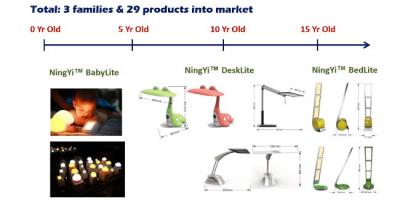
This article details the company's OLED lighting panels, its strategy to create an initial health-lighting niche market in china, its current product families and its technology and business roadmaps going forward.
Let's start with FOL's panels. As we said the company has a 2-Gen OLED fab, and the panels in production feature an efficacy of 70 lm/W, a lifetime of over 20,000 hours (T70 @ 3000 cd/m2), a CRI of over 90 (R8) and a color temperature of either 2700K or 3000K.

FOL has launched three product families under the NINGYI brand. These are all "health lighting" products, aimed for small babies and teenagers. The baby range is called BabyLite and it uses amber and 2700K OLED panels that emit soft blue-free light. The panels are placed inside safe silicon housing that are marketed as completely safe for baby and mother.
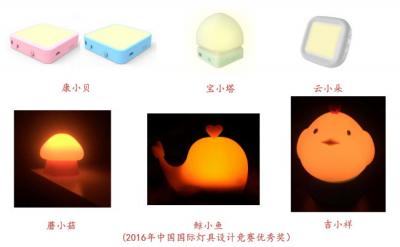
The DeskLite range is aimed towards kids at about 10 years of age, while the BedLite range is aimed for bed-side reading and for teenagers. These reading lights are brighter than the baby lighting lamps (3000 - 4000 cd/m2), and the bed-side lamps use three OLED panels each. The lighting temperature is 2700-3000K.
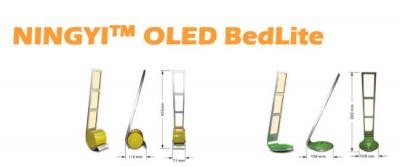
First-O-Lite explains that it focuses on health lighting because it does not see OLED lighting prices dropping fast enough to compete with LEDs. The company expects OLED lighting price ($/klm) to drop from around 200 today to 50 in 2020 - which will not be enough to compete with LEDs (which will drop to 0.36 $/klm by 2020). This is why the company is focused on high-end applications which are less sensitive to price.
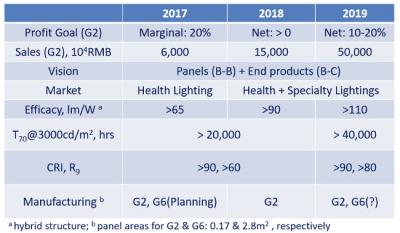
First-O-Lite says it is already selling thousands of its panels (annual rate) and the product launch was a success in China. You can see the company's road map above. The company is planning a larger Gen-6 OLED lighting fab that may start production in 2019, which will increase the company's production volume and enable it to lower the price of its panels.
FOL also expects to increase the panel performance and enter into the specialty lighting market next year. It's goal is to reach 110 lm/W in 2019. In November 2013 the company announced it has developed the world's most efficient OLED lighting module at 111.7 lm/W, so it's hope to reach such high efficiencies may be based on this achievement.
It is very interesting to see OLED lighting companies embrace different strategies as all aim to ship OLED panels which are currently priced at a very large premium over competing lighting technologies. Several companies (such as Osram, Konica Minolta / Pioneer and others) are focusing on the automotive market, while France-based Blackbody is focusing on its premium designs.
First-O-Lite is not alone in trying to take advantage of the healthier light emitted by OLEDs. OLEDWorks is already producing amber light OLEDs which are blue light free (for hospitals and other applications). Taiwan's WiseChip is collabring with the National Tsing-Hua University to commercialize its blue-light free OLEDs. Here is an OLED Auditorium presentation by NTHU that explains the hazards of blue light.
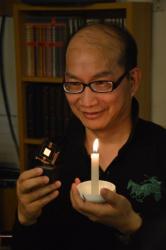
It seems like the only company that has imminent plans for general lighting is LG Display - which is readying its Gen-5 OLED fab. LGD's OLED lighting prices will be lower than the competition due to this fab's large capacity - but will it be enough to unlock new markets?

